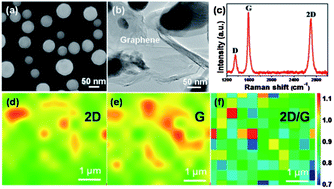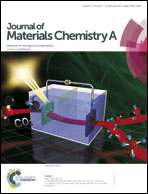Directional architecture of graphene/ceramic composites with improved thermal conduction for thermal applications†
Abstract
Directional heat transfer can provide an efficient way for thermal management in thermal transfer, thermal energy storage, etc. A novel growth method is proposed to synthesize continuous graphene films on insulating substrates by Ni-assisted chemical vapor deposition (CVD) at relatively low temperature down to 800 °C. Uniformly dispersed Ni nanoparticles on ceramic substrates play an important role of capturing carbon atoms and accelerating the nucleation to grow high quality graphene rooted on insulating ceramic substrates (anodic aluminum oxide, cordierite). The graphene species consist of 1D isolated graphene tubes coated on AAO, which can act as the media for directional thermal transport. The graphene/Ni/cordierite composite contains an interconnected macroporous graphene framework with a low sheet electrical resistance down to 8.6 Ω sq−1 and thermal conductivity of 4.17 W m−1 K−1. The porous graphene/Ni/cordierite composite can hold phase change materials (wood's alloy) to construct efficient thermal energy storage devices due to its high thermal conductivity, which can be used as heat sinks in thermoelectric devices. This work displays the great potential of CVD direct growth of graphene on insulating porous substrates for directional heat conduction, thermal management and thermoelectric applications.


 Please wait while we load your content...
Please wait while we load your content...